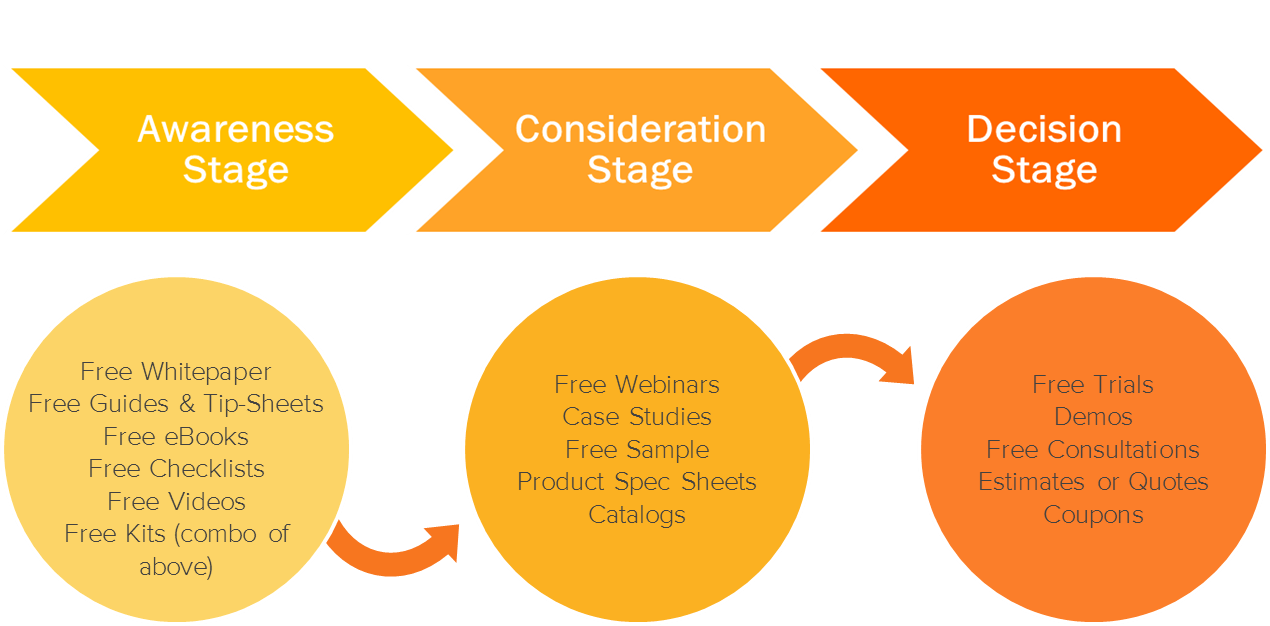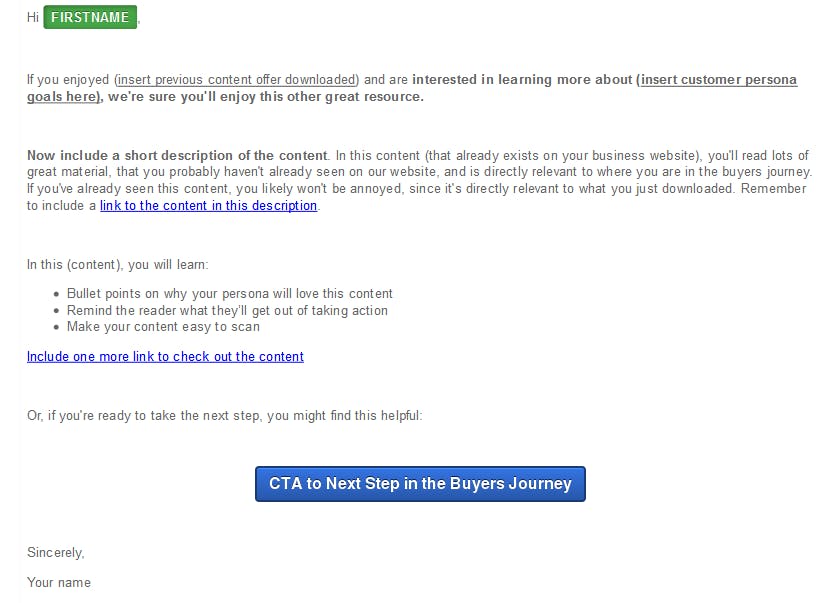Your lead generation efforts have been going well, and now it’s time to nurture your leads. Unfortunately you don’t really have any content to use to nurture the leads, and you don’t have time to create any new material.
You’ve read enough of the lead nurturing statistics to recognize that lead nurturing works. You know that 50% of leads are qualified, but not ready to buy (source: Gleanster Research), you understand that nurtured leads produce, on average, a 20% increase in sales opportunies versus non-nurtured leads (source: DemandGen Report), and you love that lead nurturing emails get 4-10x the response rate compared to stand-alone email blasts (source: SilverPop/DemandGen Report).
Do you have contents to lead nurture? or Do you have enought time to make it?
This is a common problem many businesses face as they get more into inbound marketing.
Typically this happens when:
- You have more leads than your sales team can handle, and you need to create some type of automation.
- You aren’t closing enough of your website leads into customers, and feel like those leads aren’t the best quality.
3 Steps to Start up right Now
Step1 Start by auditing your downloadable content
What is a content audit?
A content audit is essentially creating a list of all of your downloadable assets and categorizing them by the type of content and where they exist in the buyers journey.

After you complete a content audit, you’ll have a clear understanding of how your offers fit into your sales process. And that’s pretty great.
In a perfect world, everyone who came to your website would already be in the decision phase and would download one of your offers. But the truth is that the majority of your visitors will be in the awareness or consideration phase (either performing initial research, or comparing you to other similar companies). So understanding how your offers relate to each buyer’s journey will allow you to plan out what information they’ll be looking for, and what content you’d like them to see.
Step2 Set goals for your lead nurturing campaigns
Every lead nurturing campaign should have a clear goal to help you determine what contentwill be most useful to include in your emails.
- Are these contacts in the awareness stage? If so, a common workflow goal would be to push them into the consideration phase.
- Have they downloaded a consideration-stage offer? Then perhaps the goal of this workflow should be to drive those contacts toward the decision stage.
- Tracking the success of your Workflows begins with determining what your success metric is.
Step3 Identify content relevant to the buyer’s journey
When a user is in the awareness phase, they’re still gathering research. So start by creating a list of more educational resources which already exist on your website.
Here are some ideas to get you started:
- Popular blog articles
- Relevant whitepapers or ebooks
- Archived webinars or videos on industry news and topics
- Content from the resources page of your website
- Industry-related news articles (even if they’re not your own)
When in the consideration stage, a visitor is typically comparing vendors. They’re likely comparing your business offerings against those of other companies in your space. So start by compiling existing content that hightlights your benefits and solutions, as well as company-specific information.
Some content ideas are:
- Products/solutions page
- About us page
- Product overview videos
- Client testimonials
- Case studies
- Comparison sheets
- Recent company press releases/news
How can I help personas if I dont know, what are they looking for?
If you haven’t done so already, it’s time to create your personas. Pay extra special attention to the goals, challenges, and objections that are common with your personas.
Once you have your personas established, you can look at the content you’ve found on your website, and pick out the most relevant information to your personas, as well the goal of the nurturing campaign.
Remember, short and sweet is the name of the game with nurturing emails
You’ll want to include a short intro where you relate to the target persona, and highlight some great content you think they’ll like. Highlight a few bullets on why the content is useful, include links where they can read more, and then close with a CTA.
Here’s an example that can be applied to almost any business:

Summary
- Catagorize your downloadable content by the buyer’s journey
- Create goals for each workflow
- Uncover relevant content that you already have created
- Use your persona research to pick the most applicable resources to share
- Package it up into an awesome email
Source : HubSpot
You might also want to check this blogs:
- How to Blog and Increase Your Traffic in 11 Steps
- 20 Ways to BrainStorm before to Create a New Blog
- How To Promote Your Blogs Online
- Your Business Doesnt Need a Website, What You Really Need is a Platform
- 13 Ways to Create New Content Offers for Your Persona
- 7 Step Guide to Creating a Resource Center for Your Contents
- What is the definition of Persona Online??
- 8 Steps to Create Contents & Lead Generation
- 10 Steps that will Optimize Your Landing Pages
- Create Call to Actions in 8 Steps
- 9 Awesome Steps to Create Email Marketing for Business
- 5 Best Ways to Test Your Email Contents
- 5 Steps to Get or Increase Guest Blogging
- 4 Ways to Drive Traffic in Your Landing Pages
- 10 Steps to Create Awesome Email Newsletter
- 10 Steps to Create a Monthly Inbound Marketing Report
- Content That Should Be on Your Lead Nurturing Emails
Start today to build your business with HubSpot (Inbound Marketing Software)





